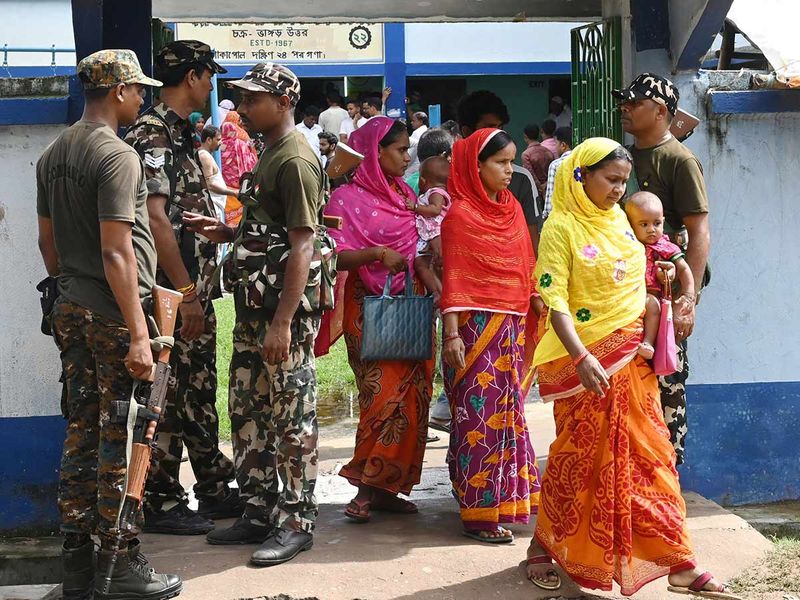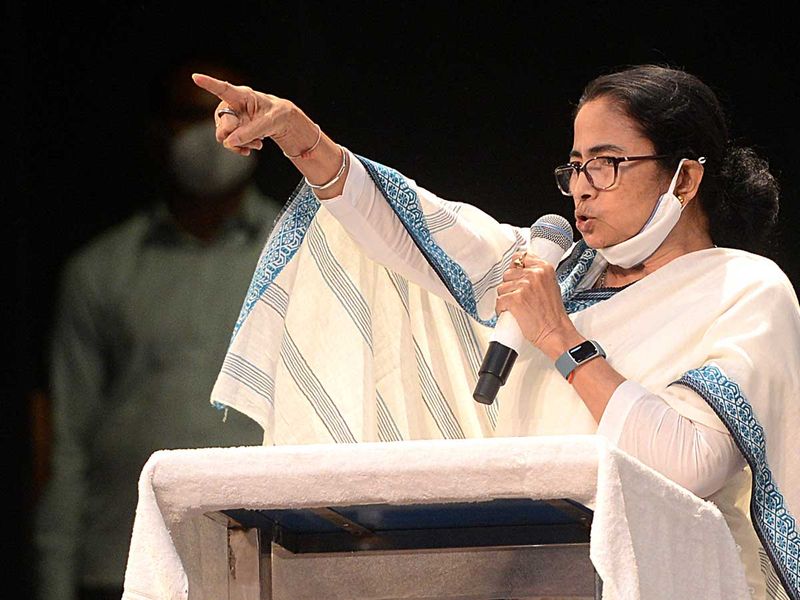
Five years ago, in 2018, the West Bengal panchayat elections — to elect around 74,000 local village-level representatives — were a turning point for the state’s ruling Trinamool Congress party.
They deepened a sense of exasperation with the Trinamool Congress, and voters voted in record numbers for the Bharatiya Janata Party (BJP) in the general elections the following year.
In 2018 the TMC cadres were so undemocratic that 34% seats were won uncontested, and they were won by the TMC of course. Five years later, the panchayat elections have concluded again, and the percentage of uncontested seats has come down to 12%.
In both 2003 and 2013, it was around 11%. In other words, the TMC seems to have learnt from its 2018 mistake and reverted to the mean, the old normal. This means the TMC at least allowed a formal contest in 88% seats. We don’t need to speculate that the TMC cadres prevent opposition nominees from contesting. There are enough news reports from the ground telling us about it.
Violence happens when someone dares to contest, dares to win. The percentage of uncontested seats gives us a better picture of panchayat election violence than death toll figures, which is reportedly underreported.
The TMC has won all 20 district bodies — the Zilla Parishads, 80% of the gram panchayats and 92% of the panchayat samitis. Such dominance would be difficult to hold without the ecosystem of violence. The BJP was a distant second.
Elections in most of India are rather free of violence and repression. They may often not be fair — some parties may be better funded, may have a more sympathetic media, may misuse government funds and law enforcement to their advantage. But nobody gets killed. Nobody is threatened to withdraw their nomination. Panchayat and assembly elections in West Bengal thus feel like another country.
The more things change
There has been a long history of political violence in West Bengal that helps the ruling party entrench itself. People are afraid of voting it out.
Mamata Banerjee made her place in history in 2011 when she defeated the Communist Party of India (Marxist)-led Left Front rule after 34 years. But she could do so only because the Left Front itself made critical mistakes, turning the masses against itself. It took a revolution, a democratic one, with its own share of violence.

The violent cadres, the freelance goons, the goons masquerading as party cadres and party cadres masquerading as goons quietly shifted from CPM to TMC. If someday the BJP has to come to power, it cannot do so without poaching this ecosystem of violence.
There is no political party, not even the down-and-out Congress, whose candidates did not use some violence in this West Bengal panchayat election. Crude bombs and sticks were being used by all sides, and some of the dead include TMC workers.
There is no denying that the TMC is the main perpetrator and beneficiary of this ecosystem — as of today. If the TMC was to try and get off the tiger, it would probably lose. Power in West Bengal is contested house to house, party flags hoisted on each house, which at once signal threat and protection.
Getting off the tiger
It is worth asking how many of these violent village-level cadres are even in the TMC’s control. Given that victory in these elections is also about petty local corruption, local power elites call the shots. The ecosystem of political violence in West Bengal is too powerful even for the Trinamool Congress to take on. It’s easier to own it than to disown it.

This is where Mamata Banerjee’s name won’t be written in history books as a leader who went against the grain and attempted to change the mechanics of politics in the state.
Yet some attempts are being made, if only in degree. The reduction in uncontested seats is an indication of that. Her government has attempted to strengthen the police at the district level so that the state’s control over the masses is not exercised entirely through the violent party cadres. This will help, but ultimately it is the party that has to change how it imagines politics.
Most significantly, Mamata Banerjee’s nephew and heir apparent Abhishek Banerjee has openly said he wants to change the party. His 60-day Jan Sanjog Yatra travelled through the state in an attempt to change the party’s image, and his own.
It may have helped him to dissociate himself from the panchayat violence, but as the TMC’s sweeping victory shows, it will take a lot more than one yatra.









